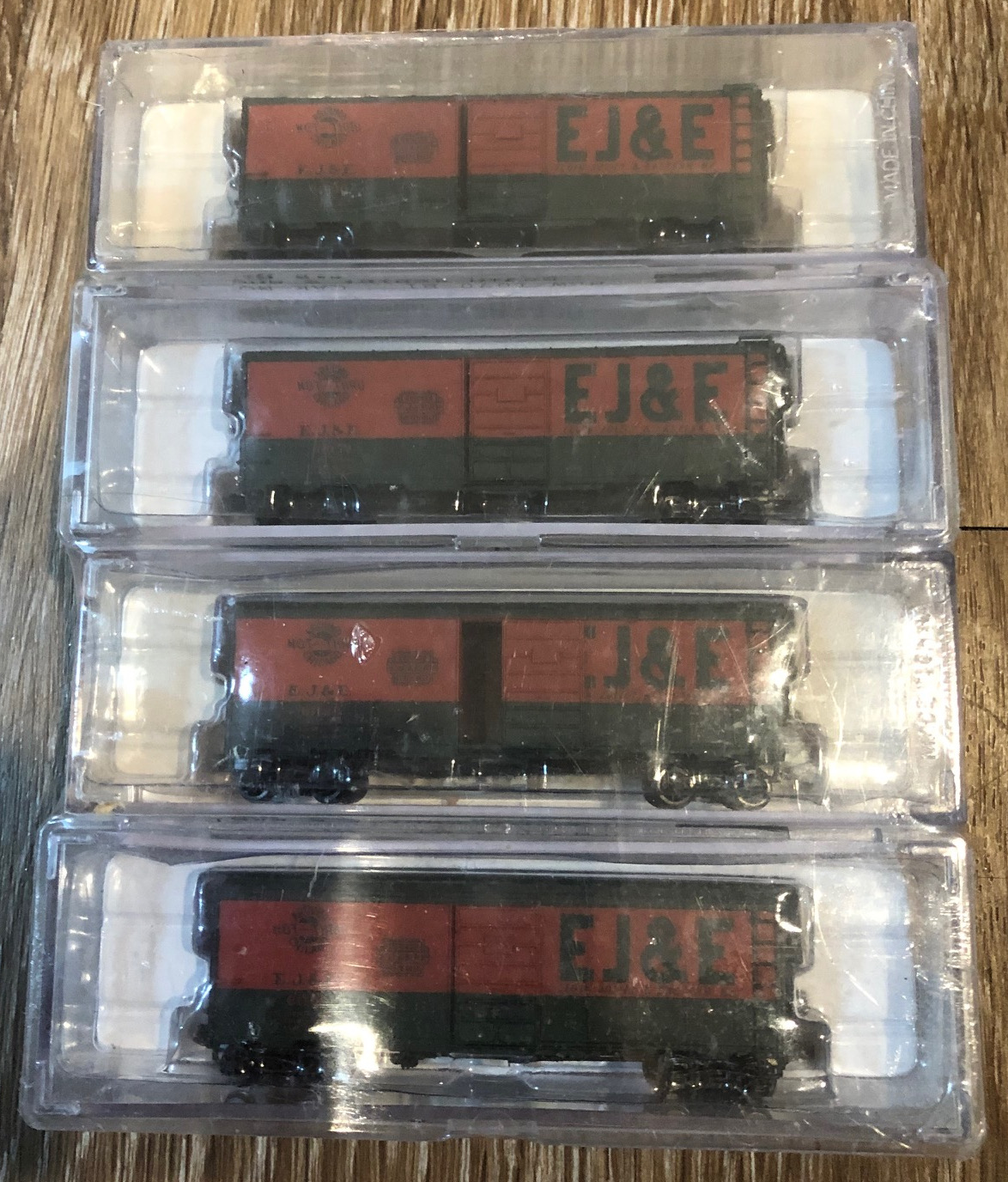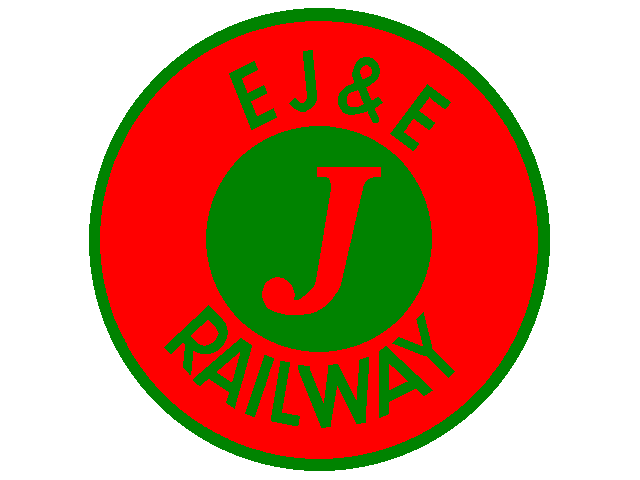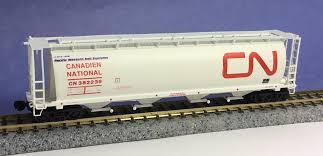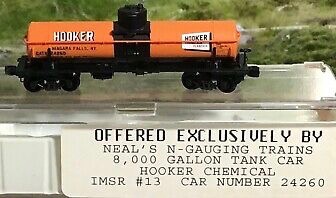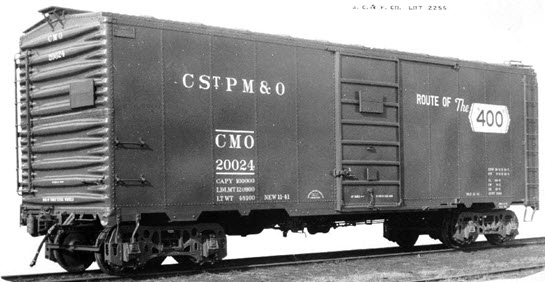Specific Item Information: Road Numbers: 61030, 61057, 61146, 61192
Prototype History: The Association of American Railroads had been establishing design standards for freight cars since the early part of the century. Each new design standard meant higher capacity, lighter, more durable cars.
The Modified 1937 AAR boxcar design was a result of the industries continued search for more freight volume per carload. The real first attempt at a standardized design had been the 1932 ARA steel boxcar with an inside height of 9'-4" . In 1936 the board of the AAR approved the 1937 AAR design with a 10'-0" inside height. This became a standard throughout the industry.
The Modified 1937 AAR boxcar design was a result of the industries continued search for more freight volume per carload. The real first attempt at a standardized design had been the 1932 ARA steel boxcar with an inside height of 9'-4" . In 1936 the board of the AAR approved the 1937 AAR design with a 10'-0" inside height. This became a standard throughout the industry.
Road Name History: The EJ&E dates from 1888. For most of its history, it was owned by US Steel whose Gary Works is near the east end of the line. Another company owns the mill now.
The EJ&E traces a wide arc around the Chicago area between 30 and 40 miles from the city center from Waukegan on the north, around Walker and Joliet, then east as far as Porter, Indiana. Because of this, the EJ&E was known for years as “The Chicago Outer Belt.” It also had the nickname, “The J”.
EJ&E’s two biggest missions have been moving steel and acting as a transfer road for all of Chicago’s Class 1’s and shortlines. As a result, the line was heavily trafficked with 100 locomotives required to serve just 230 route miles. In addition, EJ&E had over 10,000 freight cars, a huge fleet for a line that size.
In the early diesel days, EJ&E stuck mostly with Baldwin and EMD with a few Alco RS2’s thrown in. The J had more Baldwin center cab transfer engines (DT 6-6-2000) than anyone else, in fact more than just about everyone else combined. Ballasted EMD SD7’s painted in green over orange were also used in transfer service. EMD NW2’s were the primary switchers. In 1970, the Baldwins were replaced by EMD SD38-2’s, delivered with dual controls to they could just as easily run long hood forward. By that time, EJ&E had gone to solid orange with silver trucks and fuel tanks with various striping and logo placement variations over the years. They would also toy with gold and yellow and green and yellow schemes.
In 2009 the Elgin Joliet & Eastern was acquired by Canadian National in order to link their former Wisconsin Central, Illinois Central, Chicago Central & Pacific, and Grand Trunk Western lines. These lines approached the city from different directions and had required trackage rights and terminal roads to reach each other so acquiring the EJ&E was a logical move.
The EJ&E traces a wide arc around the Chicago area between 30 and 40 miles from the city center from Waukegan on the north, around Walker and Joliet, then east as far as Porter, Indiana. Because of this, the EJ&E was known for years as “The Chicago Outer Belt.” It also had the nickname, “The J”.
EJ&E’s two biggest missions have been moving steel and acting as a transfer road for all of Chicago’s Class 1’s and shortlines. As a result, the line was heavily trafficked with 100 locomotives required to serve just 230 route miles. In addition, EJ&E had over 10,000 freight cars, a huge fleet for a line that size.
In the early diesel days, EJ&E stuck mostly with Baldwin and EMD with a few Alco RS2’s thrown in. The J had more Baldwin center cab transfer engines (DT 6-6-2000) than anyone else, in fact more than just about everyone else combined. Ballasted EMD SD7’s painted in green over orange were also used in transfer service. EMD NW2’s were the primary switchers. In 1970, the Baldwins were replaced by EMD SD38-2’s, delivered with dual controls to they could just as easily run long hood forward. By that time, EJ&E had gone to solid orange with silver trucks and fuel tanks with various striping and logo placement variations over the years. They would also toy with gold and yellow and green and yellow schemes.
In 2009 the Elgin Joliet & Eastern was acquired by Canadian National in order to link their former Wisconsin Central, Illinois Central, Chicago Central & Pacific, and Grand Trunk Western lines. These lines approached the city from different directions and had required trackage rights and terminal roads to reach each other so acquiring the EJ&E was a logical move.
Brand/Importer Information: InterMountain was founded in 1985 by Fred Brummet. They got started in the model railroad business by producing O-Scale model kits. They got started in the N Scale business almost a decade later when in 1994 they introduced the 40-23 reefer car in kit form. Later, in 1998, they started producing RTR (Ready-to-Run) models. By the early 2000s, InterMountain phased out kit production in favor of the RTR models.
The InterMountain Railway company is located at 1224 Boston Ave in Longmont, CO. They are a manufacturer of HO, N and Z scale model trains. They have produced kits as well as RTR (Ready-To-Run) models. Their N Scale products include locomotives as well as rolling stock. Their rolling stock lineup includes Boxcars, Hoppers, Tank Cars, Reefers, Gondolas, Stock Cars and Flatcars.
Their locomotive releases have primarily been diesel units, with the one major exception being their series of AC-12 Cab Forward steam locos. Their diesel lineup includes F3's, F7's, F9's, SD40's, SD45's and FT units. They are known for quality and detail. They also release their rolling stock in larger varieties of road numbers than most of the other manufacturers.
The InterMountain Railway company is located at 1224 Boston Ave in Longmont, CO. They are a manufacturer of HO, N and Z scale model trains. They have produced kits as well as RTR (Ready-To-Run) models. Their N Scale products include locomotives as well as rolling stock. Their rolling stock lineup includes Boxcars, Hoppers, Tank Cars, Reefers, Gondolas, Stock Cars and Flatcars.
Their locomotive releases have primarily been diesel units, with the one major exception being their series of AC-12 Cab Forward steam locos. Their diesel lineup includes F3's, F7's, F9's, SD40's, SD45's and FT units. They are known for quality and detail. They also release their rolling stock in larger varieties of road numbers than most of the other manufacturers.
Commissioner Information: Brooklyn Locomotive Works was a hobby shop, specialized in N-scale, located in Manalapan, New Jersey, that also sells on-line. BLW regularly commissions special runs.
The company was founded by Pete Postel who announced that he would retired by end of 2018. His brother Paul should continue the business from his own shop Hogtrainz.com.
Brooklyn Locomotive Works (BLW) released special runs from various manufacturers under its own brand until approx. the mid-1980s. Thereafter the special runs where sold under the manufacturer's name and denoted as special runs for BLW. Hence in this database, we assign the BLW brand in the former case, and the original manufacturer's brand in the latter.
The company was founded by Pete Postel who announced that he would retired by end of 2018. His brother Paul should continue the business from his own shop Hogtrainz.com.
Brooklyn Locomotive Works (BLW) released special runs from various manufacturers under its own brand until approx. the mid-1980s. Thereafter the special runs where sold under the manufacturer's name and denoted as special runs for BLW. Hence in this database, we assign the BLW brand in the former case, and the original manufacturer's brand in the latter.
Item created by: gdm on 2019-01-29 14:24:47. Last edited by gdm on 2020-07-24 07:24:39
If you see errors or missing data in this entry, please feel free to log in and edit it. Anyone with a Gmail account can log in instantly.
If you see errors or missing data in this entry, please feel free to log in and edit it. Anyone with a Gmail account can log in instantly.


